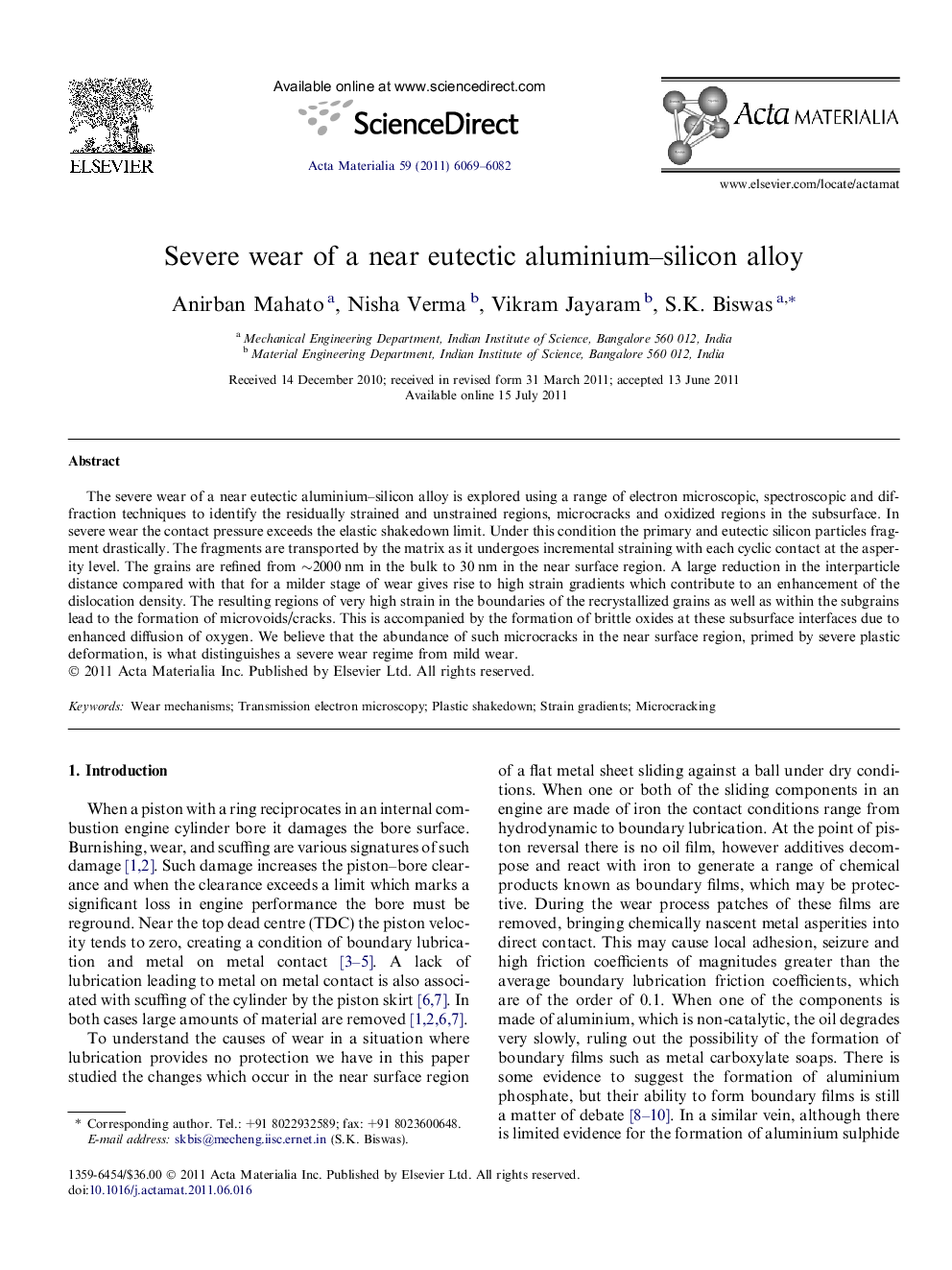| Article ID | Journal | Published Year | Pages | File Type |
|---|---|---|---|---|
| 1447475 | Acta Materialia | 2011 | 14 Pages |
The severe wear of a near eutectic aluminium–silicon alloy is explored using a range of electron microscopic, spectroscopic and diffraction techniques to identify the residually strained and unstrained regions, microcracks and oxidized regions in the subsurface. In severe wear the contact pressure exceeds the elastic shakedown limit. Under this condition the primary and eutectic silicon particles fragment drastically. The fragments are transported by the matrix as it undergoes incremental straining with each cyclic contact at the asperity level. The grains are refined from ∼2000 nm in the bulk to 30 nm in the near surface region. A large reduction in the interparticle distance compared with that for a milder stage of wear gives rise to high strain gradients which contribute to an enhancement of the dislocation density. The resulting regions of very high strain in the boundaries of the recrystallized grains as well as within the subgrains lead to the formation of microvoids/cracks. This is accompanied by the formation of brittle oxides at these subsurface interfaces due to enhanced diffusion of oxygen. We believe that the abundance of such microcracks in the near surface region, primed by severe plastic deformation, is what distinguishes a severe wear regime from mild wear.
